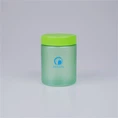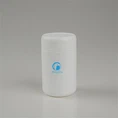When it comes to packaging medicines and supplements, safety is always the first concern. Child-resistant medicine bottles, sometimes called child-proof bottles, are designed to reduce the risk of accidental ingestion by young children. These containers play a vital role in household safety, healthcare compliance, and regulatory standards.
Why Child-Resistant Bottles Are Important
Unintentional poisoning is a serious risk in households with children. Everyday products such as prescription drugs, over-the-counter medicines, and dietary supplements can be harmful-even in small amounts-if ingested by children. The main purpose of child-resistant bottles is to make it significantly harder for a child to open the packaging, while still allowing adults to access the medicine when needed.
How Child-Resistant Packaging Works
Most child-resistant bottles use special cap mechanisms, such as:
Push-and-turn caps – Require pressing down and twisting at the same time.
Squeeze-and-turn caps – Require squeezing the sides while turning the lid.
Locking mechanisms – Built-in designs that add an extra layer of protection.
These designs rely on motor skills and hand strength that young children typically lack, providing an important safety barrier.
Regulatory Requirements
In many countries, child-resistant packaging is not just an option-it is a legal requirement. For example:
In the United States, the Poison Prevention Packaging Act (PPPA) mandates child-resistant packaging for many prescription drugs and household substances.
In the European Union, strict safety standards also apply to medicine containers to protect children.
Other regions follow similar guidelines to ensure that pharmaceutical and supplement packaging is safe.
Common Uses of Child-Resistant Bottles
Child-resistant bottles are widely used for:
Prescription medications – To prevent accidental overdose.
Over-the-counter drugs – Including pain relievers and cold medicine.
Vitamins and supplements – Especially those that resemble candy or gummies.
Household chemicals – Such as cleaning agents or pesticides, when packaged in smaller bottles.
Balancing Safety and Accessibility
While safety is critical, manufacturers also design these bottles to remain user-friendly for adults, particularly seniors who may have limited grip strength. Some products even offer dual-purpose caps, which can function as child-resistant or standard closures depending on user preference.
















